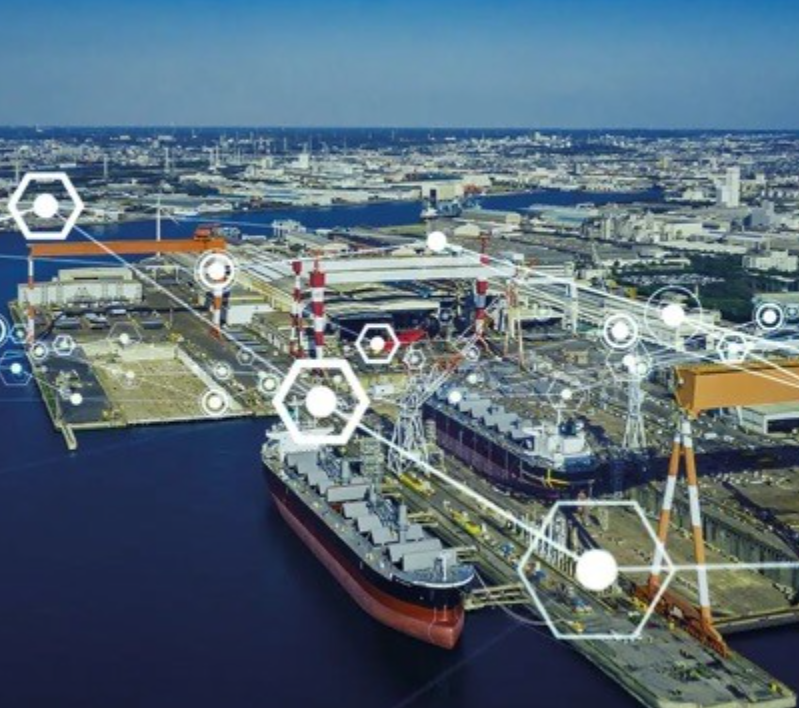Introduction:
As the maritime industry continues to evolve in response to shifting global demands, two powerful forces are reshaping its future: technological innovation and the drive for sustainability.
At the core of this transformation is a fundamental need to better serve customers, from shippers to cargo owners and even the end consumers who rely on global supply chains.
The International Ship Suppliers Association (ISSA) 66 Convention’s theme, "Meet the Customer," aptly reflects this reality—customers today demand not only reliable and cost-effective shipping solutions but also sustainable and technologically advanced operations that align with modern environmental and efficiency standards.
This article explores how the intersection of technology and sustainability is driving maritime operations forward, creating new opportunities for ship suppliers, shipping companies, and customers alike.
The rapid pace of digitalization, automation, and innovation is making it possible for the industry to not only meet but exceed the growing expectations of customers while adhering to increasingly stringent environmental regulations.
By adopting these advancements, shipping companies can strengthen customer relationships, reduce their environmental impact, and improve operational efficiency, ultimately contributing to a more sustainable maritime industry.
Meeting the Customer in a New Era of Shipping:
The maritime industry’s customers today are more informed, engaged, and demanding than ever before. Shippers, cargo owners, and end consumers now expect more than just timely deliveries; they want transparency, efficiency, and sustainability.
This shift in customer expectations has been driven by a combination of market forces, including tighter environmental regulations, advances in technology, and a heightened awareness of sustainability issues among global businesses and consumers.
For ship suppliers and shipping companies, the key to success in this new era is understanding what matters most to their customers and delivering value that goes beyond the traditional metrics of cost and speed.
Customers are increasingly prioritizing sustainable shipping practices, reduced carbon footprints, and digital solutions that offer real-time visibility into their supply chains.
The theme of this year’s ISSA Convention—"Meet the Customer"—highlights the growing need for ship suppliers to adapt to this new reality. Suppliers must not only offer products and services that enhance operational efficiency but also provide sustainable solutions that align with the broader environmental goals of their customers. This could include offering eco-friendly ship supplies, improving logistics efficiency, or leveraging digital tools to optimize procurement and reduce waste.
Technology as an Enabler of Sustainable Maritime Operations:
Technology is at the forefront of the maritime industry's push toward sustainability.
As the industry seeks to reduce its environmental impact while maintaining profitability, digitalization and automation offer powerful tools for achieving these goals.
These innovations enable shipping companies to improve efficiency, reduce fuel consumption, and minimize emissions—all of which contribute to more sustainable operations.
Digitalization and Data Analytics: The digital revolution is transforming maritime operations in ways that were unimaginable just a decade ago. Advanced data analytics, powered by the Internet of Things (IoT), allow shipping companies to monitor vessel performance in real time, optimize routes, and reduce fuel consumption. Digital twins, which create virtual replicas of ships, enable operators to test different scenarios and make data-driven decisions to improve efficiency and reduce environmental impact.
For customers, this translates into more reliable and transparent service, as well as lower emissions associated with their shipments.
Automation and Smart Shipping: Automation is another critical technology driving sustainability in the maritime industry.
From autonomous ships to automated port operations, the use of robotics and artificial intelligence is streamlining processes, reducing human error, and lowering energy consumption. For instance, automated cranes and cargo-handling systems can optimize loading and unloading processes, reducing turnaround times and minimizing fuel use. These advancements not only enhance operational efficiency but also contribute to the industry's environmental goals by reducing the carbon footprint of shipping operations.
Blockchain for Supply Chain Transparency: Blockchain technology is another emerging tool that can help ship suppliers and customers alike achieve greater transparency and efficiency.
By creating a secure, immutable record of transactions, blockchain allows for real-time tracking of goods and ensures that every step of the supply chain is accounted for.
This level of transparency can be especially valuable to customers who want to ensure that their shipments are handled in a sustainable and responsible manner.
The Role of Green Technologies in Reducing Emissions:
In addition to digital solutions, green technologies are playing a vital role in helping the maritime industry meet its sustainability targets.
With regulatory bodies such as the International Maritime Organization (IMO) setting ambitious goals for reducing greenhouse gas emissions, the adoption of clean technologies is becoming essential for shipping companies.
Alternative Fuels: One of the most promising areas of innovation is the development of alternative fuels. Traditional marine fuels, such as heavy fuel oil, are highly polluting and contribute to global CO2 emissions. In response, shipping companies are increasingly turning to low-sulfur fuels, liquefied natural gas (LNG), and biofuels as cleaner alternatives. Although these fuels still have an environmental impact, they offer a significant reduction in emissions compared to conventional fuels. Moreover, emerging options such as hydrogen and ammonia hold the potential for zero-emission shipping in the future.
Energy-Efficient Ship Design: The design of ships is also evolving to meet the demands of a more sustainable industry. Energy Efficiency Design Index (EEDI) regulations have pushed shipbuilders to create vessels that consume less fuel and generate fewer emissions.
New ships are being designed with optimized hull shapes, advanced propulsion systems, and energy-saving technologies such as air lubrication and wind-assisted propulsion. These innovations help reduce a ship's overall carbon footprint while delivering cost savings through lower fuel consumption.
Carbon Capture and Storage (CCS): Another promising technology for reducing emissions is carbon capture and storage (CCS).
By capturing CO2 emissions before they are released into the atmosphere and storing them in secure locations, CCS has the potential to significantly reduce the environmental impact of shipping.
Although still in the early stages of development, this technology could be a game-changer for the maritime industry as it seeks to meet its long-term emissions reduction targets.
Building Stronger Customer Relationships through Sustainability:
As the maritime industry adopts these technological and green innovations, it is not just about meeting regulatory requirements—it is also about building stronger, more trusting relationships with customers.
Today’s customers are looking for partners who share their values, particularly when it comes to environmental responsibility.
By investing in sustainable practices, shipping companies can demonstrate their commitment to reducing their environmental impact and enhancing the long-term sustainability of their operations.
Corporate Social Responsibility (CSR) and ESG Alignment: More companies are incorporating corporate social responsibility (CSR) and environmental, social, and governance (ESG) criteria into their decision-making processes.
Shipping companies that align their operations with these principles can position themselves as preferred partners in the eyes of customers who value sustainability.
By highlighting their green initiatives and certifications, such as the Green Award or ISO 14001, shipping companies can differentiate themselves in a competitive market.
Transparency and Communication: Effective communication is essential for building trust with customers. Shipping companies that provide real-time data on the environmental performance of their vessels and supply chains can offer customers greater transparency and peace of mind. This could involve sharing data on fuel consumption, CO2 emissions, or waste management practices, enabling customers to make informed decisions about the sustainability of their shipping operations.
Challenges and Opportunities for the Future:
While the intersection of technology and sustainability offers tremendous opportunities for the maritime industry, there are also significant challenges that need to be addressed.
High Initial Investment Costs: One of the primary challenges is the high cost of adopting new technologies and green practices. Upgrading fleets with the latest fuel-efficient engines, retrofitting ships with emissions reduction technologies, or investing in alternative fuel infrastructure requires substantial capital. This can be a barrier, especially for smaller shipping companies or those with older fleets.
Regulatory Compliance and Global Standards: The global nature of the maritime industry means that regulatory compliance can be complex. Different regions may have varying standards for emissions, safety, and sustainability. Harmonizing these standards is essential for the widespread adoption of sustainable technologies, but achieving this level of coordination can be difficult.
However, as international regulatory bodies such as the IMO continue to push for stricter environmental standards, shipping companies must stay ahead of the curve to remain compliant.
The Pace of Technological Innovation: The rapid pace of technological advancement presents both an opportunity and a challenge. While new innovations hold the promise of reducing emissions and improving efficiency, staying up-to-date with the latest technologies can be difficult.
Shipping companies need to carefully assess which technologies offer the greatest return on investment and which are most likely to succeed in the long term.
Conclusion:
The intersection of technology and sustainability is transforming the maritime industry, offering new opportunities for ship suppliers, shipping companies, and their customers.
As digitalization, automation, and green technologies continue to advance, the industry is well-positioned to meet the growing demands of customers who value sustainability and transparency.
The theme of the ISSA 66 Convention, "Meet the Customer," underscores the importance of understanding and responding to customer needs in this new era of shipping.
By embracing technological innovation and sustainability, the maritime industry can not only meet regulatory requirements but also build stronger relationships with customers and enhance its long-term competitiveness.
By Capt. Dimitrios Mattheou
CEO at Arcadia Shipmanagement Co Ltd. & Aegean Bulk Co Inc., Chairman at Green Award Foundation, President of AHEPA Maritime Chapter St’ Nicholas HJ-45 









